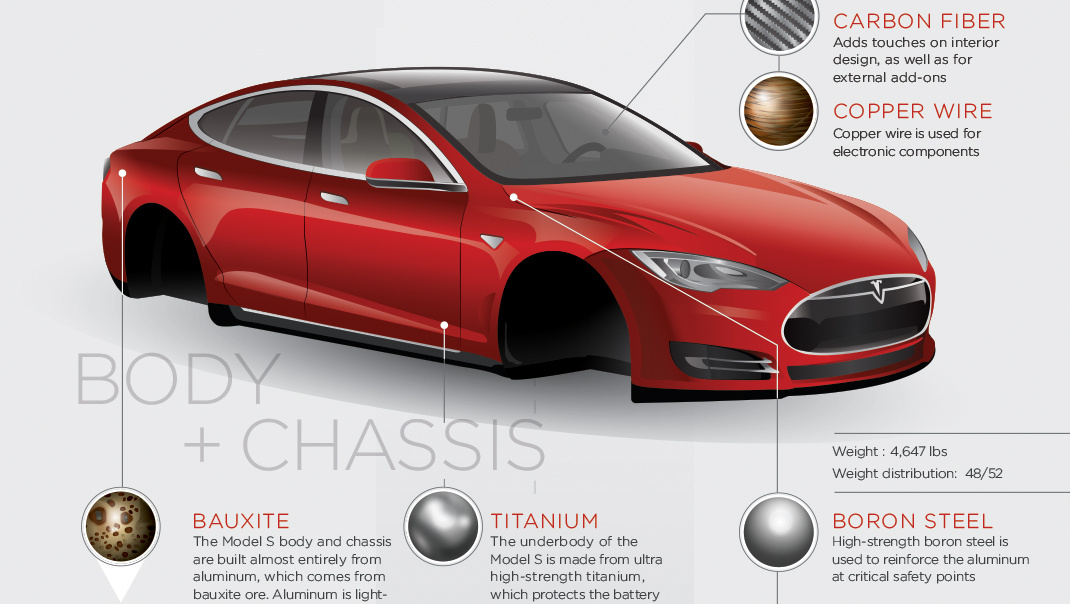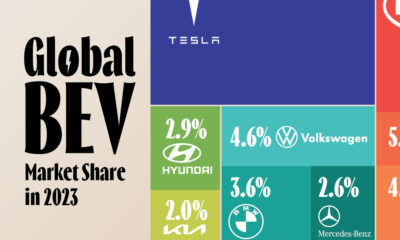Mining
Extraordinary Raw Materials in a Tesla Model S

The Extraordinary Raw Materials in a Tesla Model S
Presented by: Red Cloud Klondike Strike (Equity crowdfunding in mining)
The Tesla Model S is the world’s most-wanted electric car, with 100,000 units already sold as of December 2015.
Critics have lauded the car for its impressive safety rating, range, and design. However, it is also worth considering that it is the incredible raw materials that go into the Tesla Model S that help to make all of these things possible.
Here’s what’s in a Tesla Model S:
Body and Chassis
Bauxite: The Tesla Model S body and chassis are built almost entirely from aluminum, which comes from bauxite ore. Aluminum is lightweight, which helps to maximize the range of the battery beyond that of other EVs. The total amount of aluminum used in the car is 410 lbs (190 kg).
Boron steel: High-strength boron steel is used to reinforce the aluminum at critical safety points. Boron steel is made from iron, boron, coking coal, and other additives.
Titanium: The underbody of the Tesla Model S is made from ultra high-strength titanium, which protects the battery from nearly any roadside force or piercing.
Interior
Rare Earth Metals: While Tesla engines and batteries do not use rare earths, most high-end car speakers and other electronics use rare earth elements such as neodymium magnets.
Plastic: Most plastics are made from petrochemicals.
Leather: Leather is derived from animal skin, mainly cowhides .
Silicon: Glass windows and other features are made from silicon.
Carbon fiber and copper wire are also used within the interior for various components.
Wheels
Bauxite: Aluminum alloy wheels are also made from bauxite ore.
Rubber: Natural rubber comes from rubber trees, but today 70% of US rubber is synthetic, made from petrochemicals.
Induction Engine:
Copper: Tesla’s high-performance copper rotor motor delivers 300 horsepower and weighs 100 lbs (45.4 kg).
Steel: The stationary piece of the engine, the stator, is made from both copper and steel.
Battery:
The Tesla battery pack weighs 1,200 lbs (540 kg), which is equal to about 26% of the car’s total weight. This puts the car’s center of gravity a mere 44.5 centimeters off the ground, giving the car unprecedented stability.
The battery itself contains 7,104 lithium-ion battery cells. Here’s what’s in each cell:
Cathode: The Tesla Model S battery cathode uses an NCA formulation with the approximate ratio: 80% nickel, 15% cobalt, and 5% aluminum. Small amounts of lithium are also used in the cathode.
Anode: The negative terminal uses natural or synthetic graphite to hold lithium ions. Small amounts of silicon are also likely used in the anode as well.
Electrolyte: The electrolyte is made of a lithium salt.
Copper and/or aluminum foil is also used in the battery as well.
Note: all numbers above are based on the 85 kWh battery model.
Copper
Brass Rods: The Secure Choice
This graphic shows why brass rods are the secure choice for precision-machined and forged parts.

Brass Rods: The Secure Choice
The unique combination of machinability and recyclability makes brass rods the secure choice for manufacturers seeking future-proof raw material solutions.
This infographic, from the Copper Development Association, shows three ways brass rods give manufacturers greater control and a license to grow in the competitive market for precision-machined and forged products.
Future-Proof Investments in New Machine Tools
A material’s machinability directly impacts machine throughput, which typically has the largest impact on machine shop profitability.
The high-speed machining capabilities of brass rods maximize machine tool performance, allowing manufacturers to run the material faster and longer without sacrificing tool life, chip formation, or surface quality.
The high machining efficiency of brass leads to reduced per-part costs, quicker return on investment (ROI) for new machine tools, and expanded production capacity for new projects.
Supply Security Through Closed Loop Recycling
Brass, like its parent element copper, can be infinitely recycled.
In 2022, brass- and wire-rod mills accounted for the majority of the 830,000 tonnes of copper recycled from scrap in the United States.
Given that scrap ratios for machined parts typically range from 60-70% by weight, producing mills benefit from a secure and steady supply of clean scrap returned directly from customers, which is recycled to create new brass rods.
The high residual value of brass scrap creates a strong recycling incentive. Scrap buy back programs give manufacturers greater control over raw material net costs as scrap value is often factored into supplier purchase agreements.
Next Generation Alloys for a Lead-Free Future
Increasingly stringent global regulations continue to pressure manufacturers to minimize the use of materials containing trace amounts of lead and other harmful impurities.
The latest generation of brass-rod alloys is engineered to meet the most demanding criteria for lead leaching in drinking water and other sensitive applications.
Seven brass-rod alloys passed rigorous testing to become the only ‘Acceptable Materials’ against lower lead leaching criteria recently adopted in the national U.S. drinking water quality standard, NSF 61.

Learn more about the advantages of brass rods solutions.

-
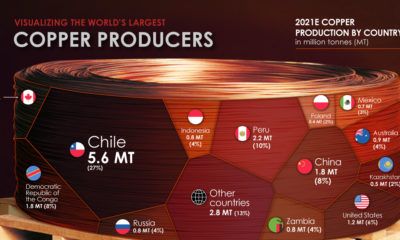
 Base Metals1 year ago
Base Metals1 year agoRanked: The World’s Largest Copper Producers
Many new technologies critical to the energy transition rely on copper. Here are the world’s largest copper producers.
-

 Silver2 years ago
Silver2 years agoMapped: Solar Power by Country in 2021
In 2020, solar power saw its largest-ever annual capacity expansion at 127 gigawatts. Here’s a snapshot of solar power capacity by country.
-
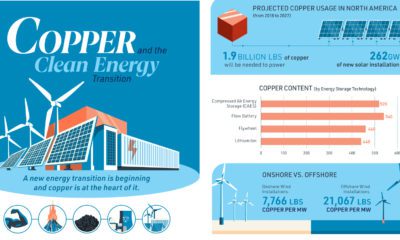
 Batteries5 years ago
Batteries5 years agoVisualizing Copper’s Role in the Transition to Clean Energy
A clean energy transition is underway as wind, solar, and batteries take center stage. Here’s how copper plays the critical role in these technologies.
-
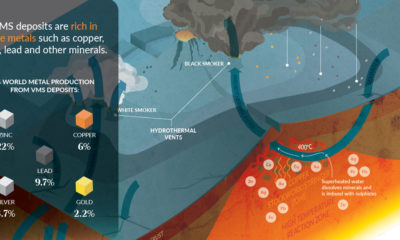
 Science5 years ago
Science5 years agoEverything You Need to Know on VMS Deposits
Deep below the ocean’s waves, VMS deposits spew out massive amounts of minerals like copper, zinc, and gold, making them a key source of the metals…
-
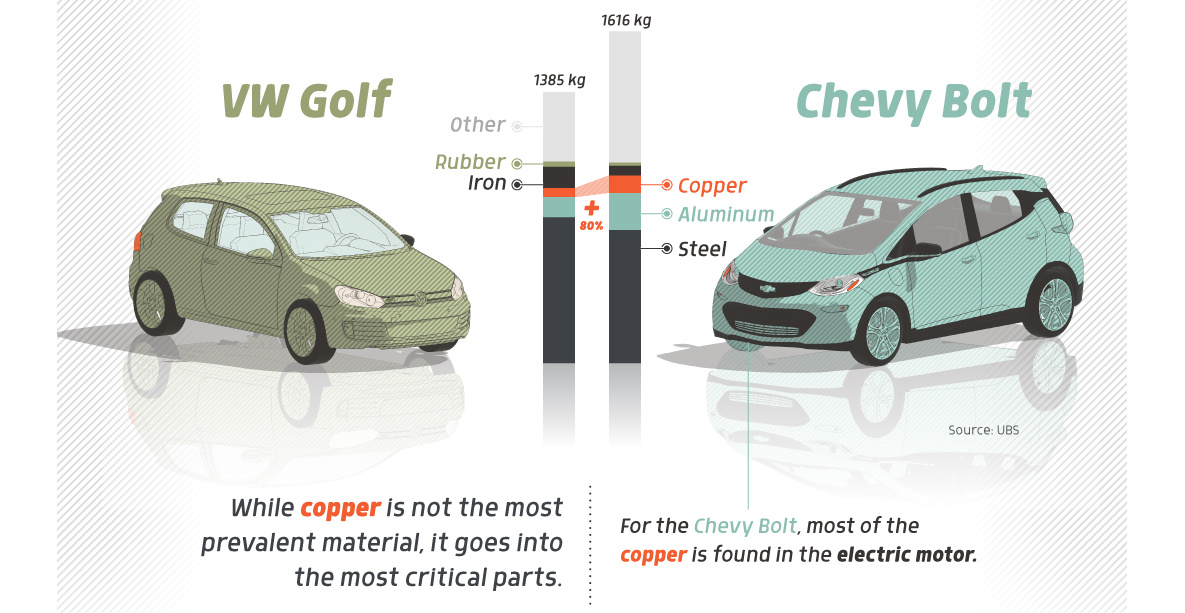
 Copper5 years ago
Copper5 years agoHow Much Copper is in an Electric Vehicle?
Have you ever wondered how much copper is in an electric vehicle? This infographic shows the metal’s properties as well as the quantity of copper used.
-
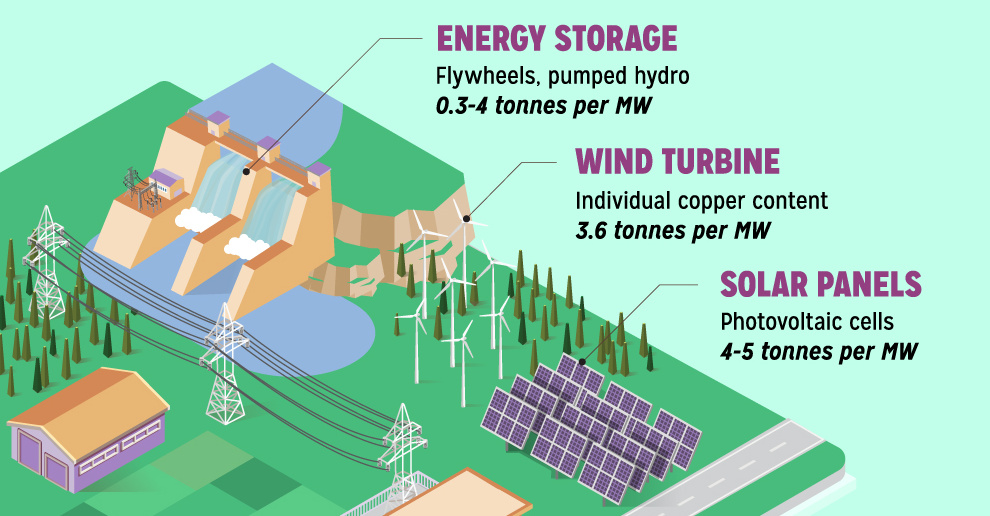
 Copper6 years ago
Copper6 years agoCopper: Driving the Green Energy Revolution
Renewable energy is set to fuel a new era of copper demand – here’s how much copper is used in green applications from EVs to photovoltaics.
-

 Markets2 weeks ago
Markets2 weeks agoVisualizing America’s Shortage of Affordable Homes
-

 Technology1 week ago
Technology1 week agoRanked: Semiconductor Companies by Industry Revenue Share
-

 Money1 week ago
Money1 week agoWhich States Have the Highest Minimum Wage in America?
-

 Real Estate2 weeks ago
Real Estate2 weeks agoRanked: The Most Valuable Housing Markets in America
-

 Business2 weeks ago
Business2 weeks agoCharted: Big Four Market Share by S&P 500 Audits
-

 AI2 weeks ago
AI2 weeks agoThe Stock Performance of U.S. Chipmakers So Far in 2024
-

 Automotive2 weeks ago
Automotive2 weeks agoAlmost Every EV Stock is Down After Q1 2024
-

 Money2 weeks ago
Money2 weeks agoWhere Does One U.S. Tax Dollar Go?

